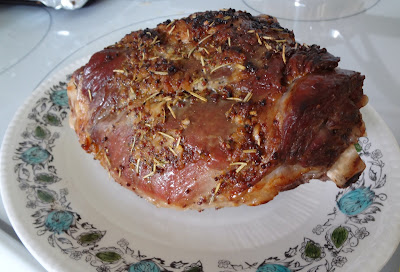I said, "Huh? How long can it take to buy a chocolate bunny and a bag of Cadbury's eggs?"
I did a commentary for CBC about the very odd concept of "Easter shopping." It was the first time I had ever heard of such a thing and judging by the reaction of my radio listeners, it was an unknown idea to them too.
Today, in 2016, I saw someone on Twitter say he'd been looking at friends' photos on Facebook and he was amazed at how much kids get for Easter. He said it looked like another Christmas.
It's not only Easter. All the "holidays" have become much more elaborate and complicated than they used to be and it's all centred on one thing: buying more stuff.
Valentine's Day, Canada Day, Hallowe'en, Thanksgiving — all now involve extravagant decorations, a special menu, lots and lots of advertising to get you out to the stores.
Easter remains a religious observance for us and a time to have friends over for a somewhat traditional dinner. But I admit, we've fallen into the new trend a bit also.
We don't decorate as sumptuously as we do at Christmas but truth is, I don't remember that we ever did decorations for Easter when I was a child. I think we coloured eggs but they were probably hard-boiled and we'd eat them later. We always got a small wicker basket from the Easter Bunny and maybe a small gift. I remember one year getting a pair of red sandals. I remember them so clearly that they must have been an unusual and unexpected gift.
The other vivid memory I have of Easter is going to church on Easter Sunday morning, always with a new outfit, little white gloves, maybe a new hat and tiny purse — and possibly, brand new red sandals.
Easter 2016
Dan was — as always — in charge of decorating. He's the best at it. Over a week ago, he cut a few branches of forsythia in the back yard. By Saturday, the flowers had burst open and although they looked nice as they were, a few eggs just added to their charm. (I remind you every so often to click on the pictures to get the full effect.)
He took this one with a flash because of the bright window behind. It made a rather beautiful effect:
Dan also took care of the table:
He coloured some new eggs this year. The ones I had done several years ago were getting a little tired, as I wrote about here.
I took care of the food. Eggs are, of course, an Easter staple and I always make devilled eggs. Which I did again. I also made a garlicky, basil, tomato bruschetta:
When we gathered at the table we had a traditional leg of lamb, rubbed with garlic, lemon, rosemary and a fig mustard:
Because we can never decide whether to have lamb or ham, we decided to have both.
The best thing about our meat dishes is that they come from our farmer, Cheryl Williams, at Shani's Farm. The meat is organic, free-range, local — and we buy it from Cheryl in a face-to-face transaction. As an extra added bonus, the meat is really really good.
The accompaniments were a Caesar salad (with bacon bits also from Cheryl's farm) and a mélange of roasted veg: red and purple fingerling potatoes, carrots, parsnips, Brussels sprouts, onions and broccoli, all tossed in a sauce based on grainy mustard, olive oil, garlic, lemon zest and oregano. (I steamed the broccoli florets and put them in just before serving to make a nice bright green addition.)
It seems like a lot of food but interestingly enough, it was a satisfying dinner but no one felt stuffed. For dessert, we had a few treats and then, because there was a little Mediterranean feel about it all, we had a limoncello gelato.
The very best thing about our Easter dinner was that we three were joined by our dear friends, Lynn, Ann and Claude. And we didn't take any photos of them! They probably would have objected anyway.
Next time, I promise.







































 Ross and Rachel
Ross and Rachel Sam and Diane
Sam and Diane













